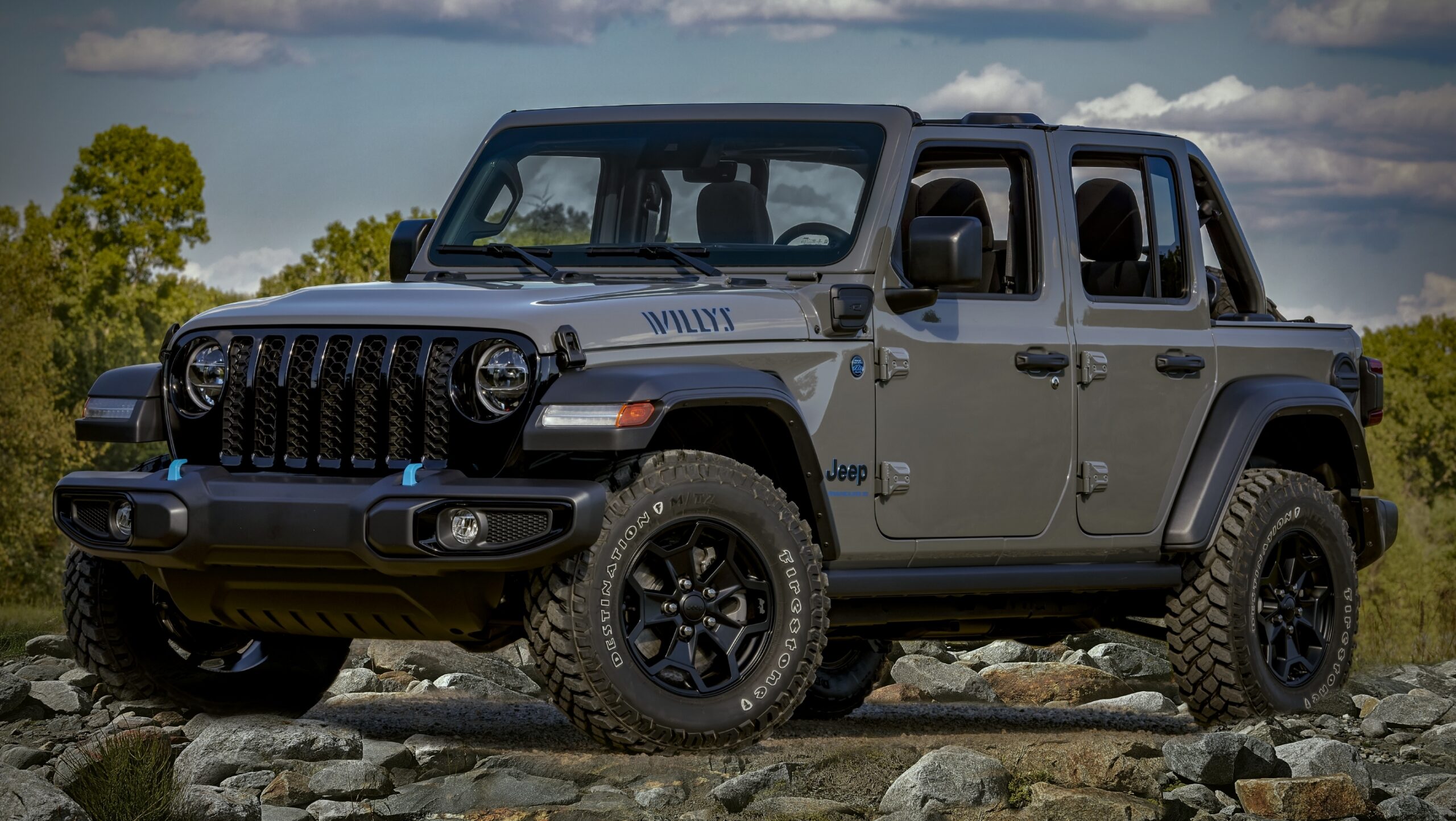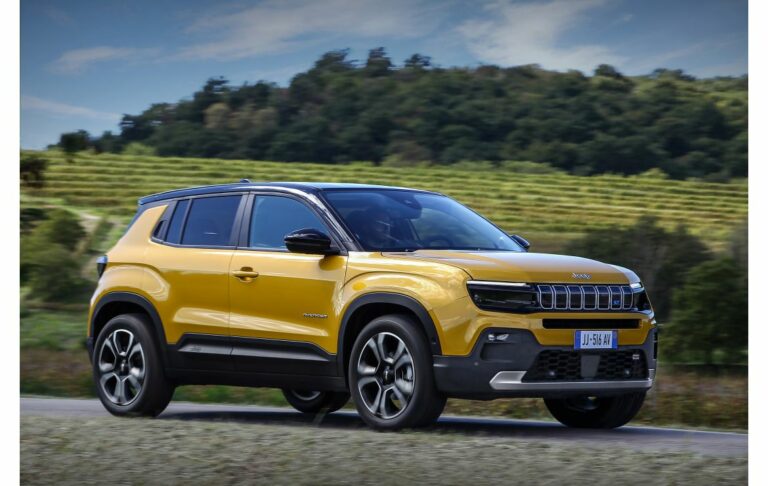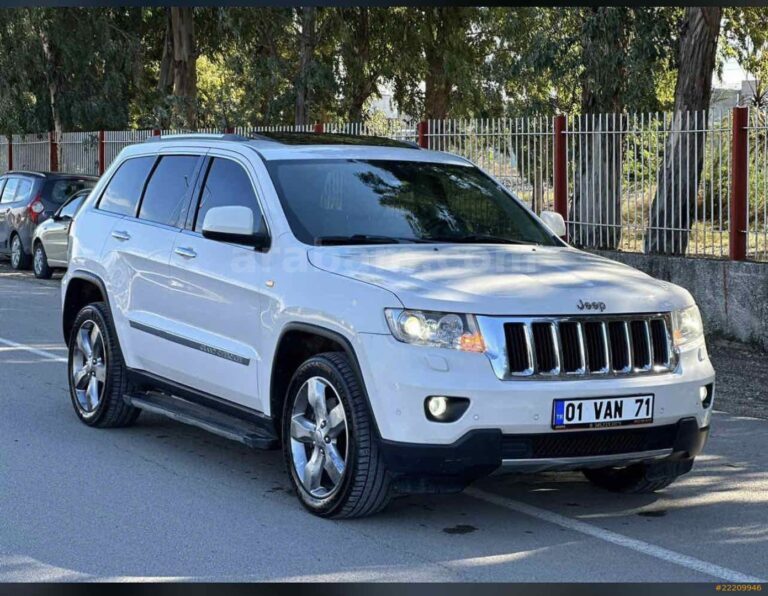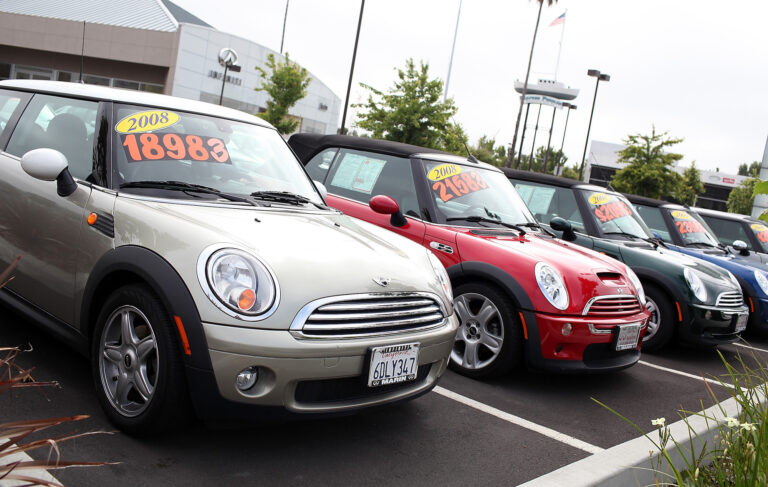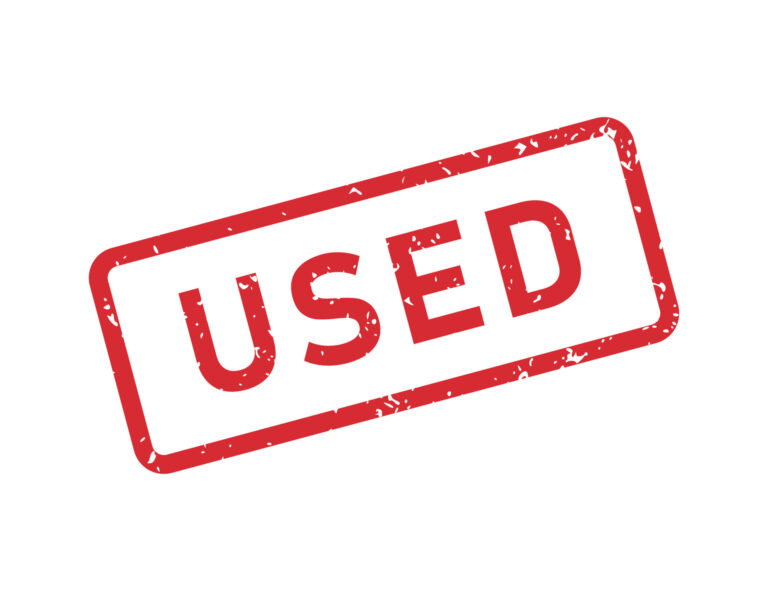Jeep TJ Lockers For Sale: Unlocking Your Off-Road Potential
Jeep TJ Lockers For Sale: Unlocking Your Off-Road Potential jeeps.truckstrend.com
For any serious off-road enthusiast, the Jeep TJ Wrangler stands as a beloved icon – a robust, capable machine built for adventure. However, even with its legendary 4×4 system, the stock open differentials can quickly become a limiting factor when tackling challenging terrain. This is where Jeep TJ lockers come into play. Far more than just an upgrade, installing lockers transforms your TJ from a capable trail vehicle into an unstoppable force, dramatically enhancing traction and allowing you to conquer obstacles that would otherwise leave you stranded.
This comprehensive guide will delve into everything you need to know about Jeep TJ lockers for sale, from understanding their fundamental role to choosing the right type for your driving style, where to find them, and what to consider before making this pivotal investment.
Jeep TJ Lockers For Sale: Unlocking Your Off-Road Potential
Understanding the Core: Why Lockers Matter
To appreciate the value of a locker, it’s essential to understand how a standard open differential works. An open differential allows wheels on the same axle to spin at different speeds, which is crucial for smooth cornering on pavement. However, off-road, this design becomes a liability. When one wheel loses traction (e.g., in mud, on ice, or lifted off the ground), the open differential sends all power to that path of least resistance, causing the wheel to spin uselessly while the other, with traction, receives no power at all. This leaves your Jeep stuck, even with three wheels firmly planted.
A locker fundamentally changes this dynamic. When engaged, it forces both wheels on an axle to spin at the same rate, regardless of traction. This means if one tire is slipping, the other still receives full power, propelling your Jeep forward. This instant and equal power distribution is what makes lockers indispensable for serious off-roading in a Jeep TJ.
The Unmistakable Benefits of Locking Your TJ’s Differentials
Upgrading your Jeep TJ with lockers offers a multitude of advantages that directly translate to enhanced off-road performance and driver confidence:
- Superior Traction: This is the primary benefit. Whether you’re crawling over rocks, plowing through deep mud, or navigating loose sand, lockers ensure that power is consistently delivered to the wheels with grip, preventing frustrating wheel spin and maintaining forward momentum.
- Increased Capability: Lockers allow your TJ to tackle significantly more challenging obstacles and terrain. You’ll find yourself able to ascend steep, loose climbs, cross uneven ruts, and navigate through obstacles that would previously have required winching or bypass.
- Enhanced Control and Safety: By preventing sudden loss of traction, lockers give the driver more predictable control over the vehicle. This reduces the likelihood of getting stuck in precarious positions and minimizes the need for risky recovery maneuvers.
- Reduced Strain on Other Components: While lockers do place more stress on axle shafts, by maintaining momentum and preventing excessive wheel spin, they can actually reduce shock loads on the drivetrain compared to trying to "bounce" your way through obstacles with open differentials.
- Unlocking New Trails: With the added capability, you’ll gain access to more difficult and rewarding trails, expanding your off-road adventures.

Types of Lockers for Your Jeep TJ
When exploring Jeep TJ lockers for sale, you’ll encounter two primary categories, each with distinct characteristics, pros, and cons:
1. Automatic Lockers
Automatic lockers, also known as "lunchbox" lockers or "drop-in" lockers (when they replace the spider gears), are designed to engage automatically when torque is applied and disengage when the torque demand is removed (e.g., when turning).
- How They Work: These lockers typically replace the internal spider gears within your existing differential carrier. When power is applied, internal mechanisms "lock" the side gears, forcing both axle shafts to spin together. When the vehicle is coasting or turning, the outer wheel’s speed can "unlock" the mechanism, allowing for differentiation.
- Pros:
- Cost-Effective: Generally the most affordable locker option.
- Simpler Installation: Many "lunchbox" designs can be installed without removing the differential carrier, making them a popular DIY choice.
- Robust: Fewer moving parts than selectable lockers, leading to high reliability.
- Cons:
- On-Road Manners: This is their biggest drawback. Automatic lockers can cause tire chirping, clunking, and a sensation of "pushing" in turns, especially on pavement. They can also affect steering, making the vehicle feel less predictable.
- Always Engaged (under power): You don’t have control over when they engage, which can be undesirable in certain low-traction situations where a little wheel spin might be preferred.
- Popular Brands: Spartan Locker, Lokka, Powertrax Lock-Right, Detroit Locker (full carrier replacement).
2. Selectable Lockers
Selectable lockers offer the best of both worlds: an open differential for daily driving and a fully locked differential at the flick of a switch.
- How They Work: These lockers replace the entire differential carrier. They require an external activation source, typically compressed air (Air Locker) or electricity (E-Locker), to engage a locking mechanism that positively locks both side gears to the carrier.
- Pros:
- Excellent On-Road Manners: When disengaged, they function as an open differential, providing smooth and predictable street driving with no negative effects.
- Driver Control: You decide exactly when and where to engage the locker, allowing for precise control over your vehicle’s traction in varying terrains.
- Maximum Versatility: Ideal for Jeeps that are daily drivers but also see serious trail time.
- Cons:
- Higher Cost: Significantly more expensive than automatic lockers, especially considering the additional components (air compressor, wiring, switches).
- Complex Installation: Requires professional installation or advanced DIY skills. This involves removing the carrier, setting backlash and bearing preload, and installing the air lines or electrical wiring.
- Potential for Failure Points: Air lines can leak, compressors can fail, and electrical connections can corrode, though modern designs are very reliable.
- Popular Brands: ARB Air Locker, Eaton E-Locker, OX Locker.
Key Considerations When Buying Jeep TJ Lockers For Sale
Before you jump into a purchase, consider these critical factors to ensure you choose the right locker for your Jeep TJ and your specific needs:
- Axle Type and Strength: Your TJ likely has a Dana 30 front axle and either a Dana 35 or Dana 44 rear axle.
- Dana 35 Rear: This is generally considered a weak axle for serious off-roading, especially with larger tires (33" and up) and a locker. Many enthusiasts recommend upgrading to a Dana 44 or even a larger axle if you plan to locker your D35. If you do locker a D35, invest in chromoly axle shafts.
- Dana 30 Front: While stronger than a D35, a D30 can still benefit from chromoly shafts, especially with a locker and larger tires.
- Dana 44 Rear/Front: A much stronger option, capable of handling lockers and larger tires more reliably.
- Compatibility: Ensure the locker you select is specifically designed for your axle model (e.g., Dana 30, 44, 35) and spline count.
- Tire Size: Larger tires (33" and above) significantly increase stress on your axles and differential components. If running big tires, axle shaft upgrades are almost mandatory with lockers.
- Driving Style and Terrain:
- Hardcore Rock Crawling/Mudding: Selectable lockers offer the most control and precision. Automatic lockers can work but require more careful driving.
- Light to Moderate Trails / Daily Driver: A selectable locker is ideal for retaining street manners. If budget is a major concern, an automatic in the rear might be acceptable, but be aware of the on-road quirks.
- Budget: This will heavily influence your choice. Automatic lockers are significantly cheaper upfront. Selectable lockers require a larger initial investment but offer more versatility. Don’t forget to factor in installation costs, which can be substantial for full carrier lockers.
- Installation: Are you comfortable with a complex differential overhaul, or will you pay a professional? Setting gear backlash and bearing preload correctly is crucial for differential longevity. Incorrect installation can lead to costly failures.
- Re-Gearing: Many people choose to install lockers when they are re-gearing their axles to accommodate larger tires. This is an efficient way to do both jobs at once, as the differential will already be open.
Where to Find Jeep TJ Lockers For Sale
The market for Jeep TJ lockers is robust, offering both new and used options:
- New Retailers:
- Online Off-Road Specialists: Websites like Quadratec, Extreme Terrain, 4 Wheel Parts, Northridge4x4, and Summit Racing carry a wide range of lockers from all major brands. They often have detailed product descriptions, reviews, and fitment guides.
- Local Off-Road Shops: Many brick-and-mortar shops specialize in Jeep modifications. They can offer personalized advice, handle sales, and often provide professional installation services.
- Used Market:
- Jeep Forums & Facebook Groups: Dedicated Jeep forums (e.g., JeepForum.com, WranglerForum.com) and Facebook Marketplace groups are excellent places to find used lockers. You might find great deals, but always exercise caution.
- Craigslist/Local Classifieds: Less common, but worth checking.
- Caveats for Used: Always thoroughly inspect used lockers for wear, damage, or missing parts. Ask for detailed photos and service history if possible. Be aware that most used lockers come without any warranty.
Installation: DIY vs. Professional
Installing "lunchbox" automatic lockers can often be a DIY project for those with moderate mechanical skills, as they typically don’t require removing the entire differential carrier or resetting gear setup.
However, installing full carrier automatic lockers (like a Detroit Locker) or any selectable locker (ARB, Eaton, OX) is a much more involved process. It requires specialized tools (dial indicator, bearing press, torque wrenches), knowledge of gear setup (backlash, bearing preload, tooth contact pattern), and a clean environment. Incorrect installation can lead to differential whine, premature wear, or catastrophic failure. For most people, professional installation by an experienced differential shop is highly recommended for these types of lockers.
Tips for Maximizing Your Locker Investment
- Do Your Research: Understand the pros and cons of each locker type and how it aligns with your specific needs and driving habits.
- Don’t Skimp on Installation: A poorly installed locker is a recipe for disaster. If you’re not confident in your abilities, pay a professional.
- Consider Axle Upgrades: Especially if you have a Dana 35 rear or plan on running large tires, upgrading to chromoly axle shafts concurrently with locker installation is a wise preventative measure.
- Learn to Use Them: If you opt for selectable lockers, practice engaging and disengaging them in safe, controlled environments to understand their behavior. With automatic lockers, learn to adjust your driving style to their unique characteristics on and off-road.
- Regular Maintenance: Keep your differential fluid fresh and at the correct level. For air lockers, regularly check air lines and compressor for leaks or issues.
Potential Challenges and Solutions
- Broken Axle Shafts: This is the most common concern with lockers, especially on weaker axles.
- Solution: Upgrade to chromoly axle shafts, drive carefully, and avoid excessive wheel hop.
- On-Road Handling Issues (Automatic Lockers): Tire chirping, clunking, and unpredictable steering.
- Solution: Drive cautiously, anticipate turns, and understand the locker’s behavior. Some find larger tires can mitigate the harshness.
- Air Leaks/Electrical Issues (Selectable Lockers): Can lead to non-engagement.
- Solution: Regular inspection of air lines, fittings, and wiring. Use quality components during installation.
- Differential Noise/Whine: Often a symptom of improper installation (incorrect backlash or bearing preload).
- Solution: Re-check gear setup, professional diagnosis and correction.
Price Table: Estimated Costs for Jeep TJ Lockers
The following table provides estimated price ranges for popular Jeep TJ lockers. Please note that these are approximate costs for the locker unit itself and do not include installation labor, new bearings, gear sets (if re-gearing), or additional accessories like air compressors. Prices can vary significantly based on brand, retailer, and current market conditions.
| Locker Type | Brand Examples | Front Axle (D30) Price Range | Rear Axle (D44) Price Range | Key Features | Installation Difficulty |
|---|---|---|---|---|---|
| Automatic (Drop-in) | Spartan, Lokka, Powertrax Lock-Right | $300 – $450 | $300 – $500 | Replaces spider gears, affordable, always engaged under power, harsh on-road | Low (DIY possible) |
| Automatic (Full Carrier) | Detroit Locker, Yukon Grizzly | $550 – $850 | $650 – $950 | Replaces entire carrier, very strong, automatic engagement, smoother than drop-in | Medium (Professional Recommended) |
| Selectable (Air) | ARB Air Locker | $850 – $1000 + Compressor Kit | $900 – $1150 + Compressor Kit | Driver controlled via air, open on-road, requires air system & plumbing | High (Professional Recommended) |
| Selectable (Electric) | Eaton E-Locker, OX Locker | $780 – $980 | $850 – $1100 | Driver controlled via electricity, open on-road, requires wiring | High (Professional Recommended) |
Note: Dana 35 rear axle lockers are typically priced similarly to Dana 30 front axle lockers but are generally not recommended for heavy off-road use without significant shaft upgrades.
Frequently Asked Questions (FAQ) About Jeep TJ Lockers For Sale
Q: Do I really need lockers for my Jeep TJ?
A: If you primarily stick to pavement or very light trails, probably not. However, if you venture onto challenging off-road terrain, rock crawl, or frequently find yourself stuck, lockers are a game-changer and a highly recommended upgrade.
Q: Should I put a locker in the front or rear first?
A: For most general off-roading, a locker in the rear axle provides the most noticeable improvement in traction. It helps push the vehicle forward. A front locker is excellent for more extreme articulation and rock crawling but can affect steering on tight trails. Many enthusiasts eventually run both.
Q: Will installing lockers break my TJ’s axles?
A: Lockers increase the stress on axle shafts, especially when one wheel has traction and the other doesn’t. While they don’t inherently "break" axles, they expose weak points. It’s highly recommended to upgrade to stronger chromoly axle shafts, especially if you have a Dana 35 rear axle or run larger tires (33" or more).
Q: Can I install a locker myself?
A: Basic "lunchbox" style automatic lockers can often be installed by a mechanically inclined DIYer. However, full carrier replacement lockers (like Detroit or selectable lockers) require specialized tools and expertise to set gear backlash and bearing preload correctly. Incorrect installation will lead to differential failure. For these, professional installation is strongly advised.
Q: What’s the difference between a locker and a Limited-Slip Differential (LSD)?
A: An LSD attempts to transfer power to the wheel with more traction but never fully locks the axle. It still allows some wheel slip. A locker, when engaged, forces both wheels to spin at precisely the same rate, providing 100% power to both, regardless of traction. Lockers offer superior performance in extreme off-road conditions.
Q: How do lockers affect daily driving in my TJ?
A: Automatic lockers can significantly impact street manners, causing tire chirp during turns, clunking, and a less predictable feel. Selectable lockers have no effect on daily driving when disengaged, as they function as open differentials until you choose to activate them.
Q: What maintenance do lockers require?
A: Regular differential fluid changes are crucial for the longevity of your locker and gears. For air lockers, periodically check the air lines for leaks and ensure your air compressor is functioning correctly.
Conclusion
Investing in Jeep TJ lockers for sale is one of the most impactful modifications you can make to your Wrangler for off-road performance. They unlock a level of traction and capability that stock differentials simply cannot provide, transforming your adventures and allowing you to confidently tackle trails you once thought impossible.
Careful consideration of your axle type, driving style, budget, and installation method is paramount to a successful upgrade. Whether you opt for the simplicity and affordability of an automatic locker or the precision and on-road manners of a selectable system, understanding your needs will ensure you make the right choice. With the right set of lockers, your Jeep TJ will not just conquer the trail – it will dominate it.
